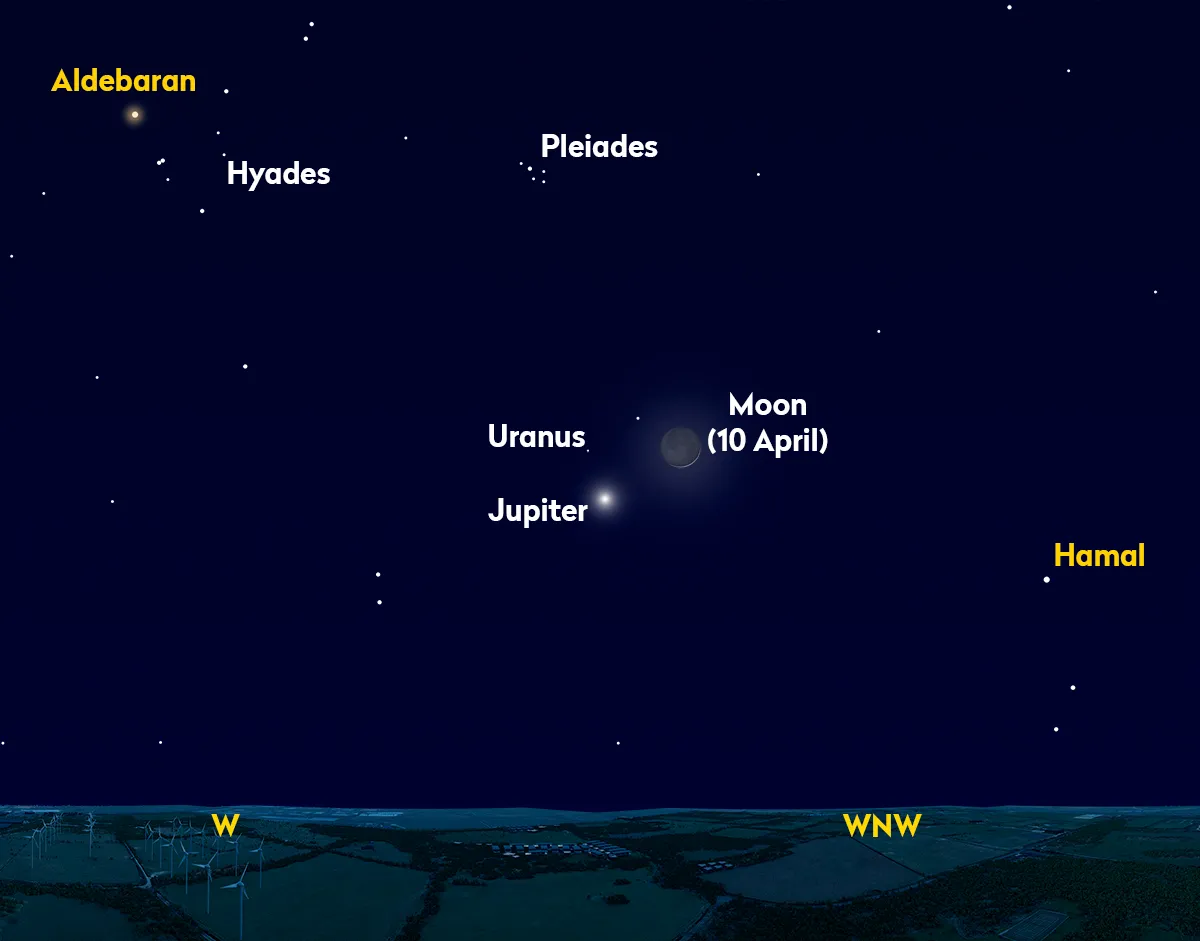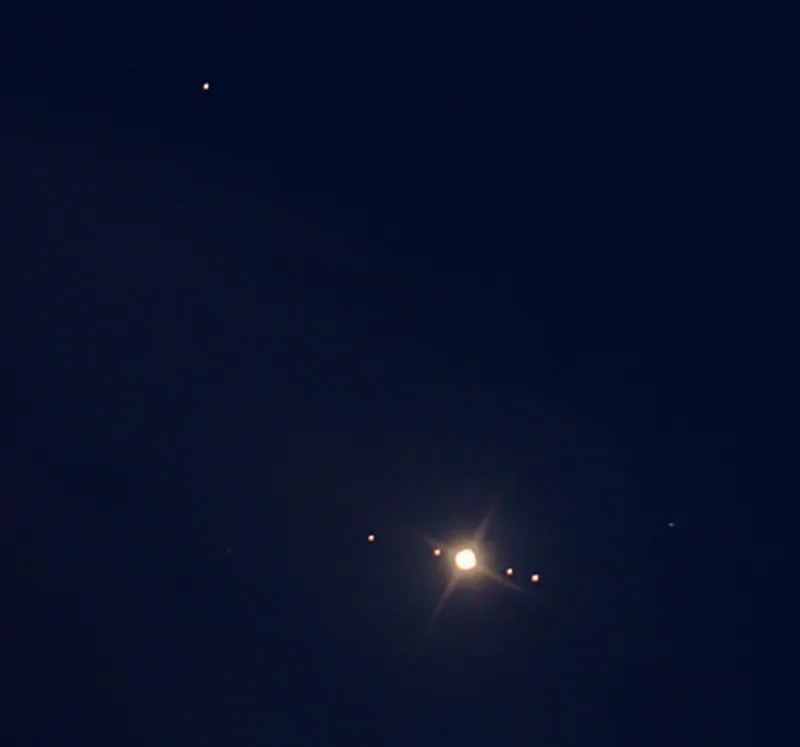None of the planets is well-placed in April 2024, all lying very close to the Sun, but Jupiter and Uranus are your best bet for planetary observing throughout the month.
Any planets that do re-emerge into the dawn twilight in April do so at a low altitude. Jupiter and Uranus remain in the evening sky in April, but not for much longer.
Read our guide to visible planets, month-by-month

Jupiter is best seen at the start of April, appearing above the western horizon as the sky darkens after sunset.
It’s losing altitude, a little over 20° up when it starts to become visible after sunset at the start of April.
By the end of the month it'll be tricky to find it, so take advantage of any clear skies at the start of the month.
For more advice, read our guide on how to observe Jupiter through a telescope.
There’s a lovely meeting between Jupiter, Uranus and a slender 5%-lit waxing crescent Moon on 10 April.
You can see what this will look like in our chart above.
The beautiful lunar crescent appears 3.2° to the north of the planet on this occasion.

Jupiter and Uranus fading in April
The reduction in the visibility of Jupiter towards the end of the month is a little ironic.
The planet has been located very near Uranus for many weeks now, the apparent separation between both worlds slowly reducing.
Minimum separation occurs on 20 and 21 April, when Jupiter and Uranus will appear 0.5° apart.
The bright twilight sky should allow Jupiter to be seen fairly easily, but Uranus will be a real struggle.
If there’s any chance of seeing Uranus, the best strategy will be to use binoculars to locate Jupiter.
If Jupiter appears in the centre of your field of view, Uranus should be visible too, slightly up and over towards the right.
Jupiter will be brightly shining at mag. –1.9, but Uranus is dimmer at mag. +5.8 on the threshold of naked-eye visibility in a dark sky.
This guide appeared in the April 2024 issue of BBC Sky at Night Magazine.
